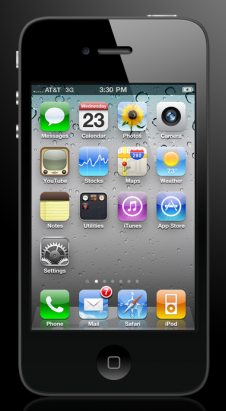 The technology behind flinging birds and slicing fruit
The technology behind flinging birds and slicing fruit
Capacitive sensing takes advantage of the human body’s natural tendency to act as a capacitor or store an electrical charge. The release of the iPhone in ’07 – and the subsequent renaissance of iOS and handheld gaming – heralded cap-touch as one of the most important gaming technologies.
In addition, more “hardcore” systems like the PS Vita incorporate an OLED capacitive touchscreen.
We take it for granted, but capacitive touch – and the endemic pinch and swipe motions – has shaped whole genres and an entire generation of game development. The simplicity of capacitive touchscreen controls is attractive to casual gamers with no patience for the relative complexity of “traditional” gaming. This interface system enabled the development of simple, highly additive iOS titles like Angry Birds and Fruit Ninja.
Imagine, if you will, that Apple relied on traditional control schemes for its iOS games, thereby adding a new layer of difficulty. Games like Jetpack Joyride, Battle Bears, and Tiny Tower — heretofore pick-up-and play experiences — would be exponentially harder and, consequently, less popular in the mainstream.
This cannot be overstated: Handheld gaming owes its wild resurgence and the ensuing paradigm shift to capacitive touch.
But it was resistive touch that stole capacitive’s thunder with the former’s high-profile utility in the Wii U – the touchscreen Wii U gamepad exploits resistive touch-sensing technology.
Your body is the controller
Two years ago, Toshiba unveiled a cool 3D motion gesture control demo at CES, the premier stage for consumer electronics. At the time, it seemed crude and unpolished, but the potential was there (see video below).
Toshiba had no involvement with the Kinect peripheral, but then, Microsoft wasn’t the first multinational consumer corporation to experiment with motion-sense tech (and without a controller, no less – “your body is the controller”).
Several years ago at CES, semiconductor company Analog Devices demoed a six-axes, motion-sense gaming peripheral with similar capabilities as the forthcoming Wii MotionPlus – convenient, since Analog designed the ADXL330 accelerometer for the Wii Remote.
Compared to its contemporaries – and especially the technologies spotlighted in this article — motion sense had a relatively low-key year. But considering its application in the Wii U gamepad, the PS Vita (using similar Sixaxis tech as the PS3 controller), and the fact that Microsoft, Sony, and Nintendo – via the Kinect, PS Move, and Wii/Wii U – each incorporate motion-sense technology, the tech continues to play a crucial role in the games industry.
Motion-sense also contributed — in large part — to the success of the Wii, which tapped the previously untouched casual gaming market. This miracle technology formed the nexus of quintessential Wii experiences like Wii Sports. “Casual gamers” — no matter how you define them — prefer games with easy learning curves, and motion-sense cuts through the initial obstacle of learning a control scheme.
Indeed, grandmas and senior citizens play Wii Sports because of the game’s utter simplicity. It can therefore be inferred that motion-sense technology led the vanguard of the casual-gaming revolution, which began in ’06 and continues to this day.
None of these technologies – autostereoscopy, touch sensing, or motion sense – launched in 2012, but given their continued evolution, their application in new hardware and gaming peripherals, and the ascension of iOS and casual games, each had a banner year.
VentureBeat's mission is to be a digital town square for technical decision-makers to gain knowledge about transformative enterprise technology and transact. Learn More
